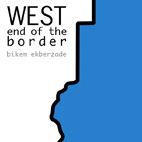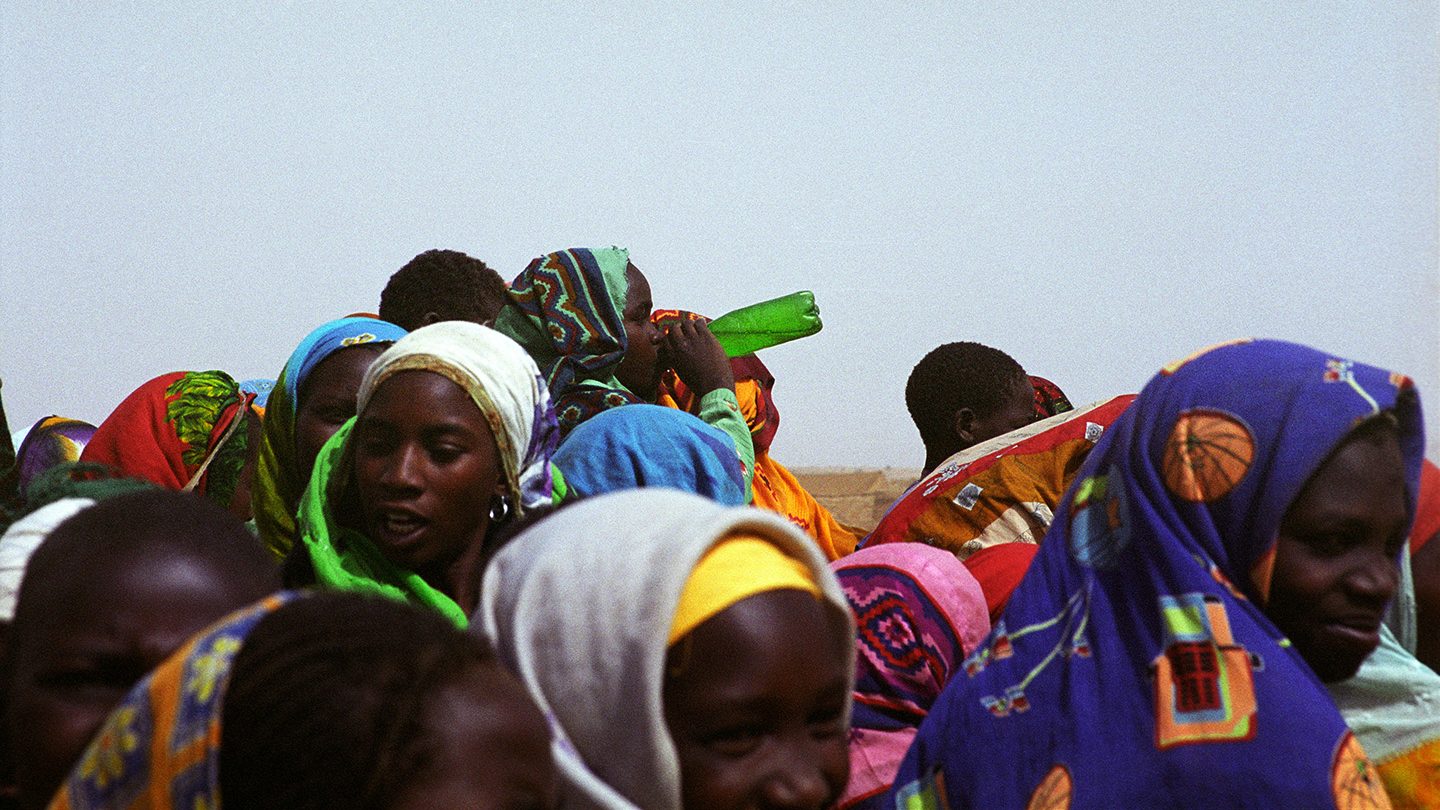
Please click the image above anytime to access the book. For the pdf version please use the alternate link.
Writing another book on refugees was not among my original intentions when I left for Eastern Chad. Originally, the material from the refugee camps meant to be a series of exhibits and installations which would keep the refugees from the Darfur region of Sudan in the public eye. After a series of exhibits of photographs and stories of the refugee families, it was proposed that I compile the material into a book. I started half-heartedly working on it in 2006, right after my first book, Illegal was published. Half-heartedly, because even though I believed that it was important for these stories to reach as many readers as they possibly could, I didn’t think such a short snapshot in time could be worthy of a book, especially when so many books on Darfur were coming out almost on a weekly basis.
Besides, life in the desert was fluid, and political alliances, the situation on the ground, almost everything related to Darfur changed fast. Chad was soon swept into civil war. The angle of news had shifted, and that is when I realized this book had to come out. Yes, everything changed except one. As talks were underway, as people discussed Darfur, the refugees seemed to be forgotten. Yet with the humanitarian personnel on base in the east partially removed, talk of camps being relocated ongoing, life as a refugee was getting harder than ever. With hardly any hope of safe repatriation, local attacks on refugees was rampant. Traffic in between camps had peaked, not to mention across the border. The families were stuck in cross fire. Normalization was still not exactly underway in Darfur, and Eastern Chad was now ablaze. Everybody had too much on their plate, and the refugees from Darfur were hardly remembered, not represented, or largely under-represented in negotiations.
Publishing a book on refugees is not a sexy undertaking. Most publishing houses are not interested, unless maybe the photographs are beautiful-bordering-erotic depictions of African women with a romantic “refugee” tag attached to them. Publishing a book doesn’t make a photographer rich either, not that The Refugee Project is founded for fame and fortune. The publishing houses mostly make the most out of sales, and the photographer is left with the warm feeling of their book on the shelves of bookstores, soon to be pushed back with the large amount of new publications coming out every other month. Refugee stories are once again put aside on shelves filled to the brim with colorful books. Photography books are often on the high end of the price range, and hardly best sellers. The reader is out there however, and in considerable numbers. So when one finds your book, and then finds you to write and ask questions or to share their critique, it is always encouraging. However hard-copy publications are still a limited way of getting the word out if you have something to tell, and that is exactly why I started The Refugee Project. To circulate the stories, to share the memories, to urge people not to forget.
These were some of the reasons why four years down the line, I decided to self-publish this book online, free of charge, with full access to anyone who was interested enough to flip through its pages. And then, I was faced with two major challenges. Well, three actually. The first one was that I needed someone who knew what was going on to read the text and give me feedback. Helen Bartlett, my good old friend and a sound expert (although in her modesty she would never accept that title) on forced migration came to the rescue. She had moved back to her hometown in Galway, Ireland, and from there, through multiple emails, she corrected and re-corrected the text. Second was Alex de Waal. His blog, Making sense of Darfur (now titled African Arguments) and the book he co-authored along with journalist Julie Flint, A Short History of a Long War (new editions re-titled A New History of a Long War), had been invaluable as I started collecting more material to digest, to make sure there were no errors in the historical/political references made within West-end of the Border. Later he also kindly accepted my request to take a look at the unedited text. With their editorial blessing, I now needed a graphic designer who would translate my vision of the book to an actual layout.
In my first book I was lucky. My good friend Leland M. Hill, a brilliant graphic designer had done the work for me voluntarily. For the second book I had to find someone whom I could equally trust, and who was at arms length so that we could work through the design process together. Other than its accessibility, for me an e-photo book would have another special meaning. The conflict in Darfur had morphed into the horror it was, mostly because of desertification. Desertification, an epidemic choking central Africa with famine, drought and poverty, was largely a result of global warming. Global warming, normally a natural process, was accelerated because of us, the industrialized nations. A paperless book would minimize our carbon footprint. When I disclosed my feelings to a friend at Galatasaray University, he proposed a barter. Özgurol Öztürk is another great graphic designer, and a faculty member at Galatasaray University. He is also the founder of Tasarımhane, a room full of design students who prolifically and creatively put out publications at no cost. He told me that if I agreed to talk to them about photography, he in turn would ask them to design my book. It was a deal.
The day I arrived at Tasarımhane I had three sets of curious eyes staring at me, Baris, İrem and Sercan. They were responsive, listening to what I had to say about the region, asking questions, forming ideas. The design process was rather long. First I had to be patient and wait for their exams to be over, then they had to wait for my assignments. However the process put the spotlight on a future master designer, Sercan Özen. He soon became the leader of the design team, and under Özgürol’s watchful eye pulled the material into what you see today.
By the time the design phase got onto a full start, too much had already come in between me and the book: First it had taken me forever to build up the text, a solid 3 years. Life had come in-between, some family drama, later losing my grandmother, a solid figure in my life. She was a strong and admirable lady in more ways than one and always an inspiration to her children and grandchildren. I would share most details of my work with her and she would be happy to hear the stories. The aftermath of her stroke had me shelf all my work, and spend the last month of her life in the hospital with her. Work didn’t matter, nothing really mattered, and after losing her, the book didn’t seem to matter either. Then one day while cleaning up my apartment in midst of a move, I found the notepad with my field notes from Chad. I sat down and started reading it. As I read the stories, I remembered the people. Most of all I remembered how much they mattered. Then I remembered the promise I had given to Hateri Hadre Harun in her earthen kitchen as she asked me to tell what had happened to them. I couldn’t just abandon the work. And that day I picked up from where I had left off a year back.
As the design phase with Tasarımhane started wrapping up we had a new challenge in front of us. We wanted the book to appear like a book online – pages flipping, the folds and the curves showing, the whole package. There were a few programs available online which we could use at the time, but all came with strings attached. Özgürol, some time back, had suggested I check out a stylish and successful online design magazine. BAK was published online just as I had envisioned this book to appear. Upon hearing our project, the project manager for BAK kindly referred us to YouCanFlip, the digital solutions company through which the magazine was published. YouCanFlip in turn agreed to sponsor the online publication of West-end of the Border, and to them we owe the “book feel” you, the reader enjoy today.
West-end of the Border was a five year long journey. It had its life like moments with its ups and downs, twists and turns. But finally we made it, and we hope you find our efforts worthwhile.
Bikem Ekberzade
Istanbul, 2010
Important Note: As mobile devices and Apps are now commonly used, accessing flash-based objects may become problematic. If you would like to access the book using your mobile phone/tablet, please click the book cover photo (or here), or alternately the pdf link in its comments.
